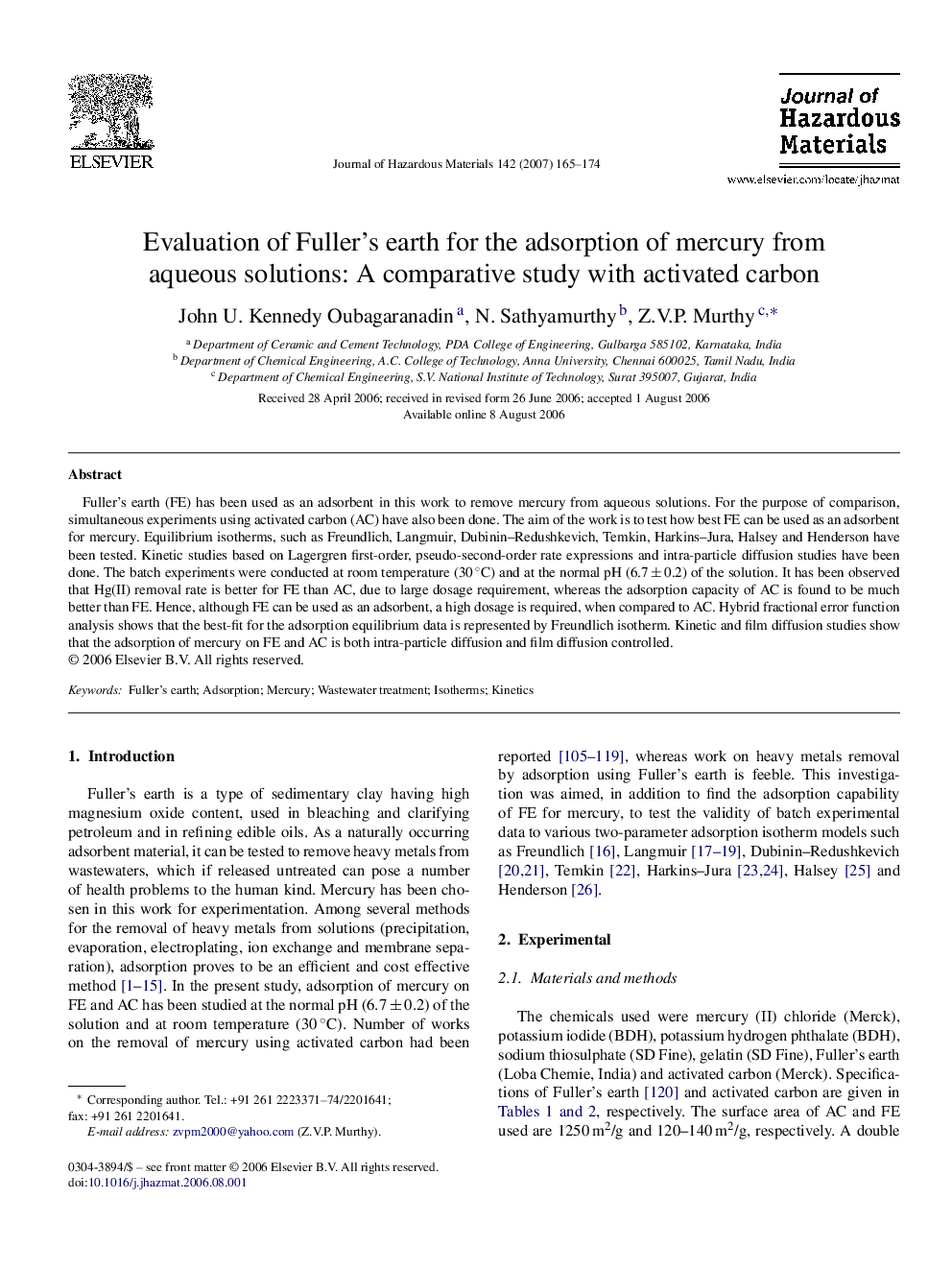| Article ID | Journal | Published Year | Pages | File Type |
|---|---|---|---|---|
| 584535 | Journal of Hazardous Materials | 2007 | 10 Pages |
Abstract
Fuller's earth (FE) has been used as an adsorbent in this work to remove mercury from aqueous solutions. For the purpose of comparison, simultaneous experiments using activated carbon (AC) have also been done. The aim of the work is to test how best FE can be used as an adsorbent for mercury. Equilibrium isotherms, such as Freundlich, Langmuir, Dubinin-Redushkevich, Temkin, Harkins-Jura, Halsey and Henderson have been tested. Kinetic studies based on Lagergren first-order, pseudo-second-order rate expressions and intra-particle diffusion studies have been done. The batch experiments were conducted at room temperature (30 °C) and at the normal pH (6.7 ± 0.2) of the solution. It has been observed that Hg(II) removal rate is better for FE than AC, due to large dosage requirement, whereas the adsorption capacity of AC is found to be much better than FE. Hence, although FE can be used as an adsorbent, a high dosage is required, when compared to AC. Hybrid fractional error function analysis shows that the best-fit for the adsorption equilibrium data is represented by Freundlich isotherm. Kinetic and film diffusion studies show that the adsorption of mercury on FE and AC is both intra-particle diffusion and film diffusion controlled.
Related Topics
Physical Sciences and Engineering
Chemical Engineering
Chemical Health and Safety
Authors
John U. Kennedy Oubagaranadin, N. Sathyamurthy, Z.V.P. Murthy,
